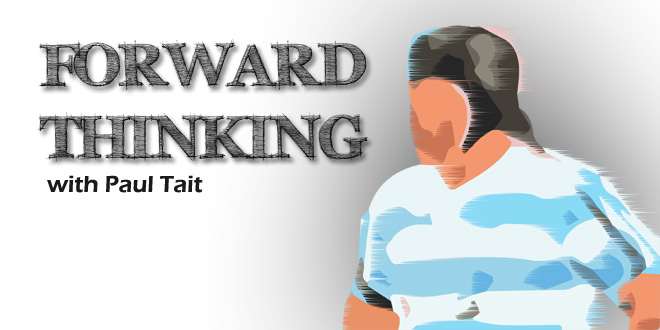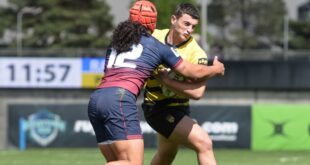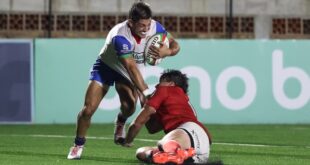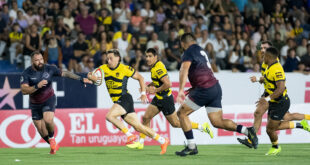Daniel Hourcade’s side was regularly referred to by commentators as being one of youth and with reason. The team he fielded this past Friday in the Bronze final featured six starting players aged 25 or under and it was no different in earlier matches.
In early 2014 Head Coach Daniel Hourcade raised the concerns of many when he declared that there was going to be personal changes with a number of experienced players missing out. He insisted it was necessary due to the static nature of the side he had inherited from Santiago Phelan.
Under Phelan Argentina was not achieving results in the Rugby Championship and nor were the June or November internationals seeing the South Americans win as often as expected. The problem in June had been Phelan’s inability to acquire the release of players based in Europe as they would either play in the Rugby Championship or June but not both. He, consequently, fielded vastly different teams in these two periods which Hourcade believed to be preventing growth.
The Clean Out
Hourcadism ended this by building a larger domestic based roster, of which many were young. It established the basis for players to come through and, ultimately, play as well as they did at the World Cup. The choice brought with it set-backs such as losing at home against Ireland and Scotland in 2014 but, in the end, without such an approach little progress could have been achieved.
Of those to get the chop under Hourcade were some of Phelan’s regular players, of whom most started 2012 and 2013 Rugby Championship fixtures when fit. I am talking about the likes of Patricio Albacete, Gonzalo Camacho, Manuel Carizza, Julio Farías Cabello, Eusebio Guinazú, Santiago Fernández, Benjamín Macome, Martín Rodríguez Gurruchaga and Gonzalo Tiesi.
Such a quantity of senior players is extremely large to disappear in the space of twenty months but this is what happened. Another veteran, Felipe Contepomi, played his retirement test match the same month that Hourcade was appointed.
The clean-out sped up the player cycle which often sees teams suffer a drop-off in performances over an extended period. It is due, in large part, to Rugby World Cups as many chose to end their careers after a World Cup.
The Benchmark
Take the 2015 World Champions as a case in point. Of the team that defeated Australia on Saturday seven were 29 or older and many of whom have played for New Zealand for the final time. Others face a tough battle to play in the next World Cup and the 2017 British and Irish Lions could further complicate the development of the team.
In 2019 Keven Mealamu will be 40, Richie McCaw and Conrad Smith will be 38, Dan Carter and Ma’a Nonu will be 37, Jerome Kaino will be 36, Kieran Read and Sonny Bill Williams will be 34 while Ben Smith will be 33. It does not end there with all of Wyatt Crockett, Ben Franks, Liam Messam, Luke Romano, Colin Slade, Victor Vito and Sam Whitelock all facing very steep uphill battles to play in Japan 2019.
Two Year Headstart for 2019
Thanks to Hourcadism Argentina has a good two year start and it is evident when analyzing the team today and looking towards 2019. Gone will be Horacio Agulla, Marcos Ayerza, Marcelo Bosch, Juan Martín Hernández, Juan Martín Fernández Lobbe, Juan Manuel Leguizamón and Leonardo Senatore. A notable list but, in all cases, replacements have already been blooded.
As remarkable as it may sound Fernández Lobbe was not involved in the wins over Australia and France in 2014 nor the win over South Africa in 2015. Leguizamón missed the first two while Nicolás Sánchez played in the first two but not the third. Involved in the later of the two was Tomás Lezana who played 60 minutes against France aged 20.
Hourcade’s policies set in place a system whereby players did not need to be flown in from far away in on short notice. Instead they could join quickly and require little time to settle in. This facilitated Argentina’s expansive game plan, a crucial change to Phelan and, indeed, to previous coaching regimes.
As a result Argentina closes a four-year World Cup cycle standing in good stead. Remarkably a team for 2019 can be penciled in today and, in all likelihood, the actual 23 players selected as being Los Pumas’ top lineup could well be close to that listed below.
As demonstrates only two players will be over 30 in 2019. They, Creevy and Sánchez, both acted as captain in the World Cup as did Tomás Cubelli and Martín Landajo who will be 30 and 31. All are in Argentina’s Super Rugby franchise and certain to play international rugby in the coming years.
Final Touches
Of those included only Patricio Fernández is playing abroad at the present point in time. He is one of the few abroad which the UAR will be wanting for international duty in 2016. Others are Juan Figallo, Mariano Galarza and Juan Imhoff, who will be 31, 32 and 31 in 2019 and, by no means, out of the frame.
These players will be required to return to Argentina to play for Los Pumas. The new policy of not selecting from abroad starts in 2016 which places the selection of all in trouble. Imhoff is contracted until Racing 92 until 2018, Fernández to Clermont until 2017 and Figallo to Saracens to 2017. Galarza will complete his contract with Gloucester in 2016 and could thereby be free to face France in June.
For Imhoff, Figallo and Fernández non-selection appears likely for the time being. They will all be wanted home which will require them to either see out their contracts before returning or negotiate to come home earlier. That is, unless, a policy similar to Australia’s comes into play whereby exceptions are made enabling experienced players to be fielded.
Joining the roster will inevitably be additional, currently uncapped players, who will emerge through the PladAR system. The question is how many and with the likes of the Americas Rugby Cup and the CONSUR Cup the pathway to the top will open doors for what is a growing talent pool.
| # | Player | Age in 2015 | Age in 2019 |
| 1 | Lucas Noguera Paz | 22 | 26 |
| 2 | Julián Montoya | 22 | 26 |
| 3 | Ramiro Herrera | 26 | 30 |
| 4 | Guido Petti Pagadizabál | 20 | 24 |
| 5 | Tomás Lavanini | 22 | 26 |
| 6 | Pablo Matera | 22 | 26 |
| 7 | Tomás Lezana | 21 | 25 |
| 8 | Facundo Isa | 22 | 26 |
| 9 | Tomás Cubelli | 26 | 30 |
| 10 | Patricio Fernández | 21 | 25 |
| 11 | Manuel Montero | 23 | 27 |
| 12 | Jerónimo De la Fuente | 24 | 28 |
| 13 | Matías Moroni | 24 | 28 |
| 14 | Santiago Cordero | 21 | 25 |
| 15 | Joaquín Tuculet | 26 | 30 |
| 16 | Agustín Creevy | 30 | 34 |
| 17 | Santiago García Botta | 23 | 27 |
| 18 | Nahuel Tetaz Chaparro | 25 | 29 |
| 19 | Matías Alemanno | 23 | 27 |
| 20 | Javier Ortega Desio | 25 | 29 |
| 21 | Felipe Ezcurra | 22 | 26 |
| 22 | Nicolás Sánchez | 27 | 31 |
| 23 | Emiliano Boffelli | 20 | 24 |
 Americas Rugby News Rugby news from across the Americas!
Americas Rugby News Rugby news from across the Americas!




